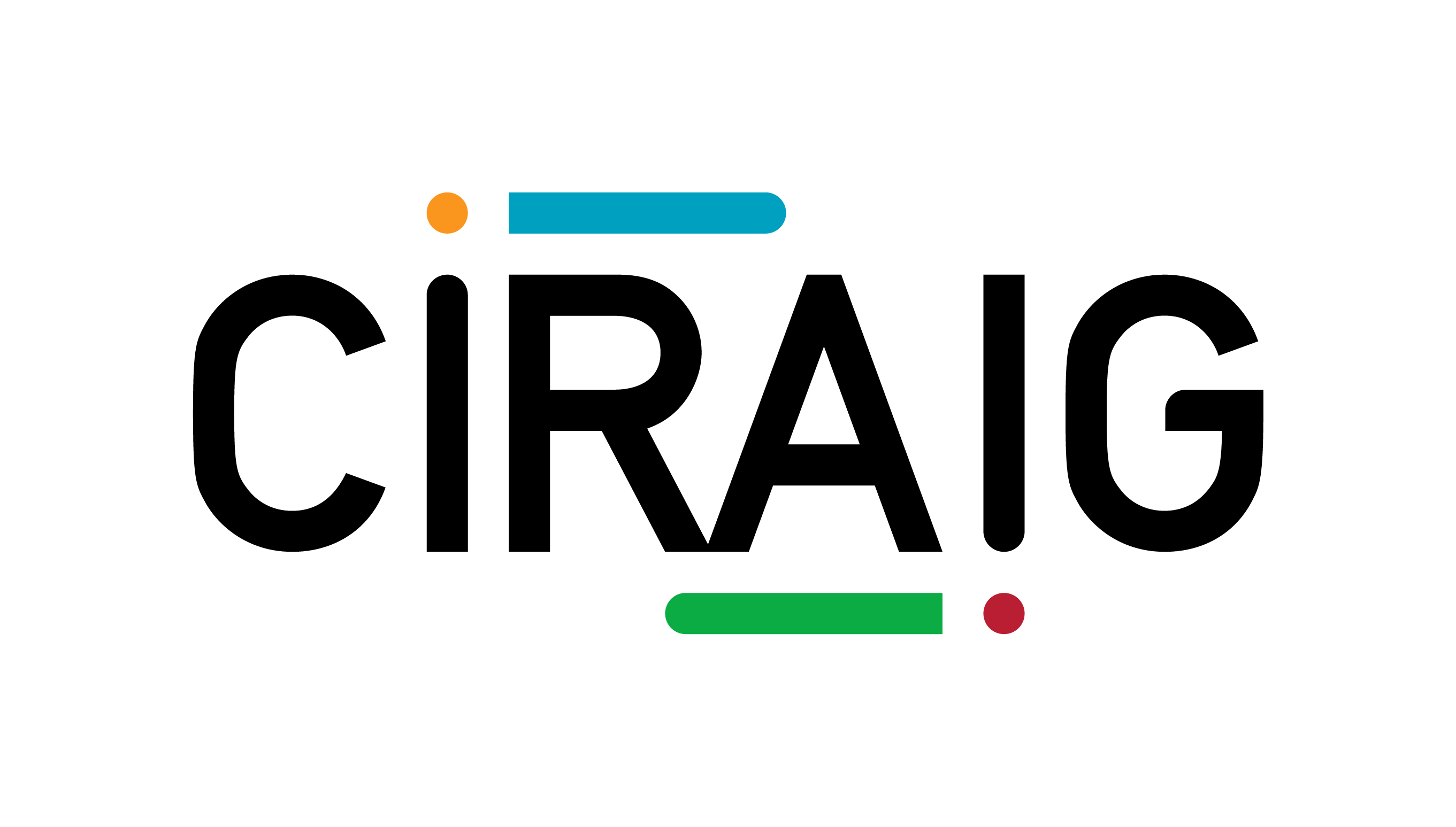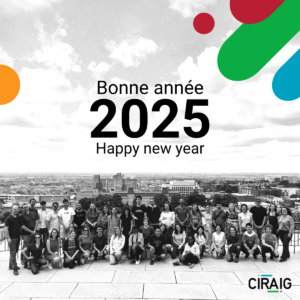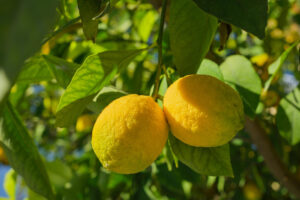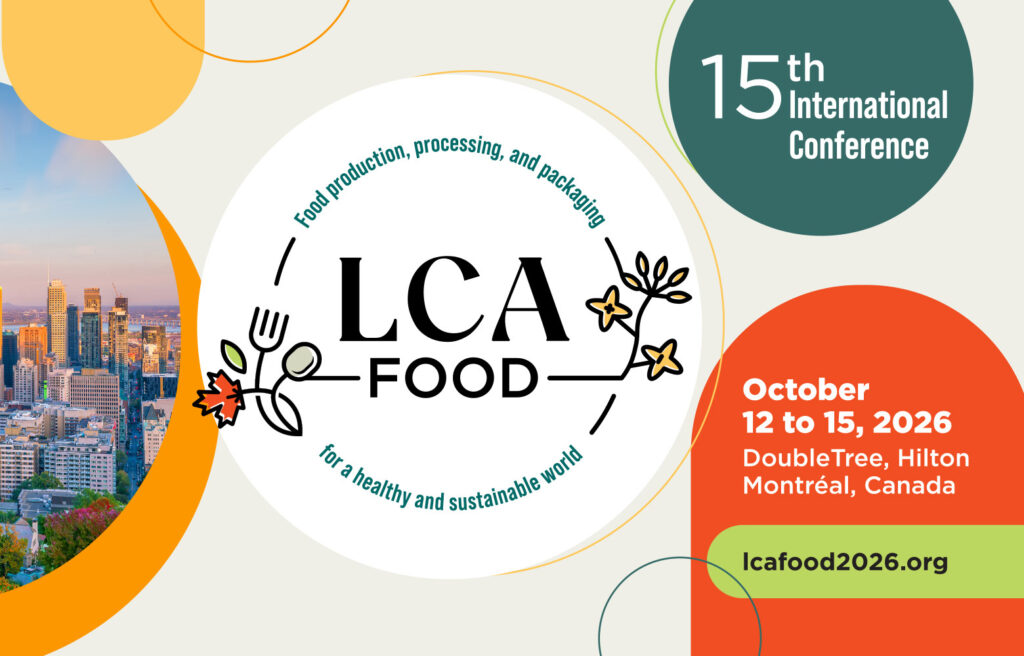The holiday season is a time for family and friends to gather and enjoy each other”s company, but unfortunately, it is also a time for over-consumption and waste. During this time of year, Canadians plan to spend an average of $1420 per person in 2021, mostly on gifts and travel.
What can we do to limit our carbon footprint this Christmas? Unfortunately, there are no studies evaluating the carbon footprint of Christmas in Quebec (and very few in the world). We invite you to follow a fictional character, Stéphane, who wants to know the carbon footprint of his family of four at Christmas in Quebec from a life cycle perspective in order to identify the most effective actions to take to reduce his footprint.
Carbon footprint of the Christmas tree: is it better to buy artificial or natural?
There’s nothing like a beautifully decorated tree to start feeling the magic of Christmas! However, is it better to buy a natural or artificial tree?
In the context of Quebec, a 7-foot tall natural Christmas tree generates 3.1 kg of CO2eq. over its life cycle. Even if the tree sequesters carbon dioxide (CO2) as it grows, this CO2 is re-emitted into the atmosphere if the tree is incinerated at the end of its life. However, if it is sent to landfill, 77% of the carbon contained in the tree will be stored in the soil for over 100 years. Moreover, if we drive 5 km to buy our tree, the car journey alone accounts for more than 80% of the carbon footprint of our Christmas tree.
Meanwhile, an artificial tree generates 16 times more GHG emissions (for a 10kg tree), notably because of the steel production used for the branches and the PVC production used for the needles. It is therefore preferable to buy an artificial tree only if you plan to use it for more than 16 Christmases. The lighter the artificial tree, the sooner its impact will be amortized.
Since his children are already grown up (and no longer believe in Santa Claus!), Stéphane chose a natural tree that he would buy from the vendor closest to his home.
What about the lights on the tree? What’s their carbon footprint?
Like 41% of Canadians, Stéphane has Christmas lights with LED bulbs. By turning them on 6 hours/day for 18 days, the electricity consumed by the 400 small bulbs will only increase the carbon footprint of the tree by 2%. If Stephane had installed the old incandescent bulbs hidden in the back of the garage, he would have increased this footprint by 15%.
The carbon footprint of Christmas dinner: food waste and the impact of meat
This year, Stephane plans to serve a nice roast turkey like a third of Canadian households and a meat pie for Christmas Eve and Christmas Day. These great meals will account for about 66 kg CO2eq. for the family. Unfortunately, the holiday season is often one of excess and Canadian families generate on average 25% to 45% more waste than they would normally. By reducing his food waste, Stéphane will be able to reduce his holiday meal footprint by over 30%. And if he chooses an all-vegan meal, he could cut that footprint in half.
The carbon footprint of common gifts: wrapping paper has less impacts than you think
Among the most popular gifts in Canada are gift cards (for restaurants and cafes, movies, books), clothing, technology items (game consoles, headphones, smartphones) and then of course, toys for children. At the foot of the Christmas tree at Stéphane’s, we find :
- a pair of jeans (33 kg CO2eq.)
- a smartphone (50 kg CO2eq.)
- and two books (2.7 kg CO2eq. each)
That’s 88 kg CO2eq. of gifts. All these presents are nicely wrapped in gift paper whose total carbon footprint represents less than 1 kg CO2eq. for the 4 gifts (including their production and their end of life).
The carbon footprint of holiday travel
Last year, Stephane and his family traveled by plane to Cuba for Christmas, adding 2.2 tons of CO2eq. to their carbon footprint. This year, the family gathering is set to take place in Sherbrooke. The family will be driving their car, generating 112 kg of CO2eq. to cover the 160 km round trip between Montreal and Sherbrooke.
Stéphane and his family’s total carbon footprint for this Christmas
Overall, Stéphane’s Christmas generated 270 kg CO2eq. for the whole family, or 67 kg CO2eq. per person or the equivalent of 22 natural Christmas trees. Although 42% of the carbon footprint is due to transportation, Stephane’s family greatly reduced their footprint by choosing to celebrate Christmas close to home and by using every available seat in the car to get there. However, the family can still improve their carbon footprint for gifts (33% of the footprint) and for food (24% of the footprint).
So what can you do to reduce your carbon footprint this holiday season?
Food :
- Limit food waste by planning purchases as much as possible and bringing a container to salvage leftovers
- Progressively integrate vegetarian or vegan options
Gifts :
- Remember that the most impactful part of the gift is inside the gift wrap
- Dematerialize gifts by offering your time
- Choose second-hand items
- Give gifts that you are certain will be used
Transportation:
- Prioritize destinations close to home
- Maximize your available car space by carpooling, for example.
This blog post is from a radio segment by Laure Patouillard, Scientific Coordinator and Research Associate at CIRAIG, on Radio-Canada’s Moteur de Recherche on December 17, 2019.
Bibliography
Haq, G., Owen, A., Dawkins, E., & Barrett, J. (2009). The Carbon Cost of Christmas, (March). https://doi.org/10.13140/2.1.1088.4808
Jean-Sébastien Trudel, Sylvain Couillard, G. B. (2009). Comparative Life Cycle Assessment (LCA) of artificial vs natural Christmas tree. Pre Publication- Version. The Methodological Sheets for Subcategories in Social Life Cicle Assessment (S-LCA)., (February). https://doi.org/10.1007/978-1-4419-8825-6
Hollywood, W. (2010). Comparative Life Cycle Assessment of an Artificial Christmas Tree and a Natural Christmas Tree for American Christmas Tree Association. Retrieved from www.pe-americas.com
Wells, J. R., Boucher, J. F., Laurent, A. B., & Villeneuve, C. (2012). Carbon footprint assessment of a paperback book: Can planned integration of deinked market pulp be detrimental to climate? Journal of Industrial Ecology, 16(2), 212–222. https://doi.org/10.1111/j.1530-9290.2011.00414.x
Ercan, M., Malmodin, J., Bergmark, P., Kimfalk, E., & Nilsson, E. (2016). Life Cycle Assessment of a Smartphone, (Ict4s), 124–133. https://doi.org/10.2991/ict4s-16.2016.15
THE LIFE CYCLE Understanding the environmental impact of a pair of Levi’s ® 501 ® jeans. (2015).
Clune, S., Crossin, E., & Verghese, K. (2017). Systematic review of greenhouse gas emissions for different fresh food categories. Journal of Cleaner Production, 140, 766–783. https://doi.org/10.1016/j.jclepro.2016.04.082









